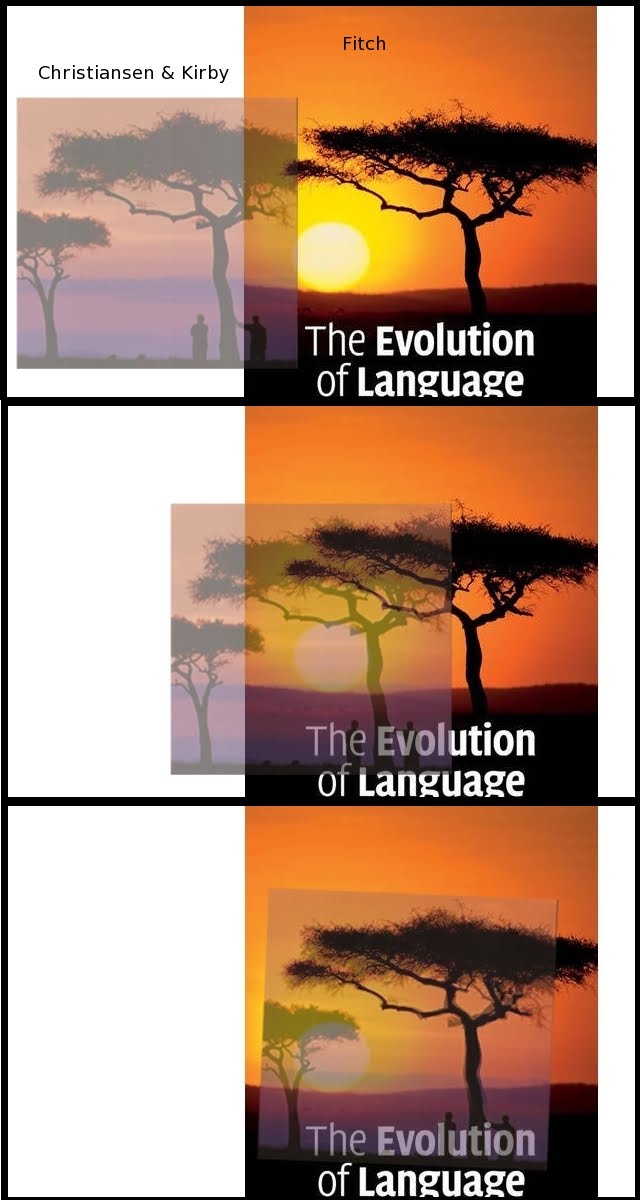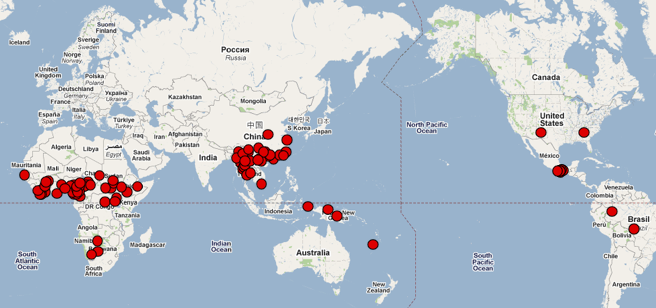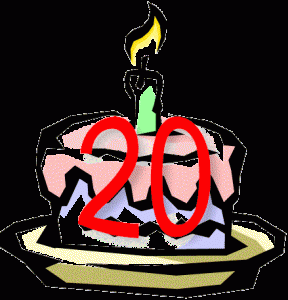A while ago, some collegues and I noticed that two prominent books on Language Evolution -Christiansen & Kirby’s Language Evolution and Fitch’s Evolution of Language – both included a picture of an acacia tree in the sunset on their covers. On closer analysis, it turned out that they were the same tree:
Thus began the Acacia Tree Hypothesis of Language Evolution.
Following this up, I was thinking about Dediu & Ladd’s discovery that linguistic tone is has certain genetic correlates. Here’s the map of languages with linguistic tone:
However, I suspected the devious influence of acacia trees and so I found some information on their geographic distribution:
As I suspected, countries in which the acacia tree Acacia nilotica grows are significantly more likely to have tonal languages:
| Tone | No Tone | |
| Acacia Trees | 163 | 117 |
| No Acacia Trees | 104 | 237 |
(Chi-squared with Yates’ continuity correction = 47.1, df = 1, p < 0.0001, data from Crop Protection Consortium and the World Atlas of Language Structures).
The plot thickens …
Dediu, D., & Ladd, D. R. (2007). Linguistic tone is related to the population frequency of the adaptive haplogroups of two brain size genes, Microcephalin and ASPM. Proceedings of the National Academy of Sciences, 104, 10944–10949.
Fitch, W. T. 2010 The evolution of language. Cambridge, UK: Cambridge University Press.
Christiansen, M. and Kirby, S. (2003). Language Evolution. Oxford University Press.
Update:
I’ve added the images David mentioned to the post:


 Also, The Babel’s Dawn blog banner
Also, The Babel’s Dawn blog banner




